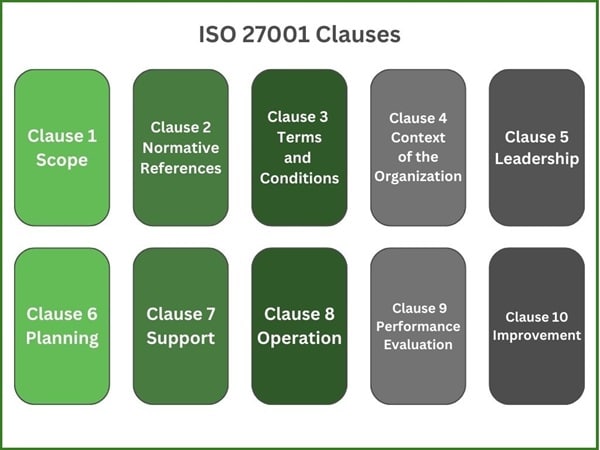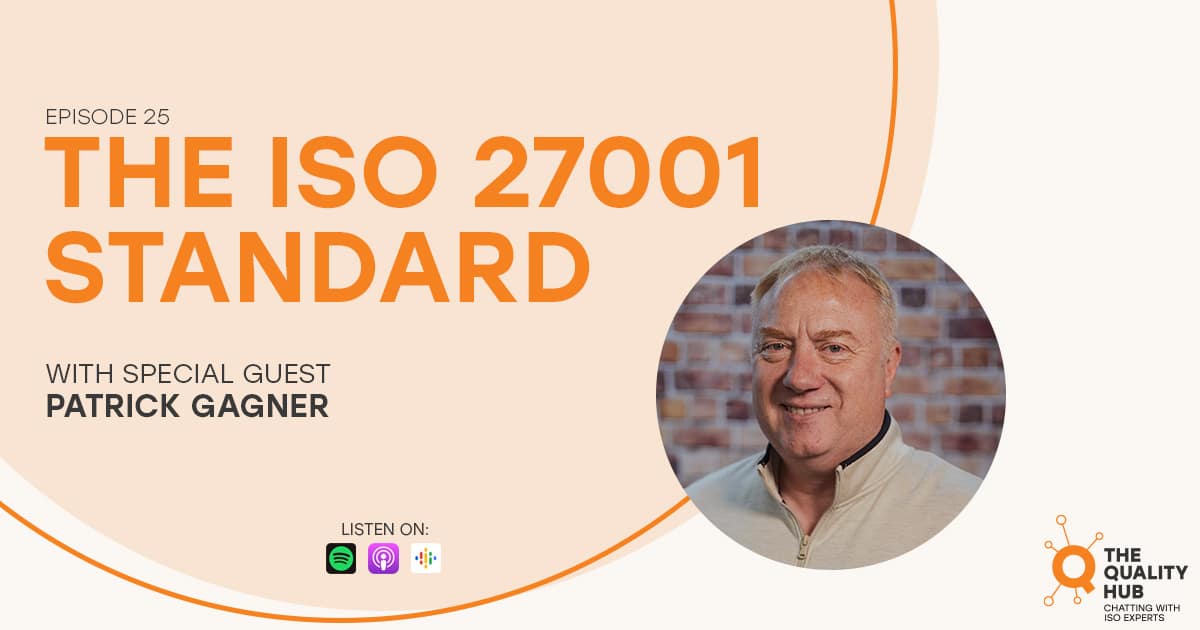ISO 27001 Clause 3 Explained
What is ISO 27001 Compliance About?
ISO 27001 compliance is about ensuring that an organization’s information security practices align with the requirements of the ISO/IEC 27001 standard, which is a globally recognized framework for managing information security. Compliance involves implementing an Information Security Management System (ISMS) that systematically manages sensitive information, addresses security risks, and protects data from unauthorized access, breaches, or other vulnerabilities.
Achieving ISO 27001 compliance means that an organization has identified and assessed potential security risks, implemented appropriate security controls (such as those found in Annex A), and established procedures to continually monitor and improve information security practices. Compliance is not just about technical measures but also involves policies, staff training, and a cultural commitment to safeguarding information.
Organizations that achieve ISO 27001 compliance demonstrate to stakeholders, clients, and regulators that they take information security seriously, helping them reduce risk, meet legal and regulatory requirements, and increase trust in their data management processes.
Get a Free Quote
What are the Requirements of ISO 27001 Clause 3?
Clause 3 of ISO/IEC 27001 outlines Terms and Definitions. This clause is essentially an index of terms used throughout the standard, ensuring that there is a common understanding of the language used in information security management. It references ISO/IEC 27000, which provides a broader set of definitions.

In Clause 3 of ISO 27001, the focus is on ensuring consistency and clarity, and it does not impose specific requirements but rather directs the user to ISO/IEC 27000 for a list of the terms and definitions that are applied within the standard.
Key points to note:
- Clause 3 itself does not define the terms but references the definitions provided in ISO/IEC 27000.
- Terms like confidentiality, integrity, availability, risk management, security controls, and assets are part of these definitions, which are fundamental to understanding and implementing ISO/IEC 27001.
- So, while Clause 3 itself is brief, it plays a critical role in ensuring that the terminology used throughout the rest of the standard is well-understood and consistently applied.
How Does a Company Comply with ISO 27001 Clause 3?
ISO 27001 Clause 3 pertains to terms and definitions. Although it doesn’t require specific actions for compliance, it sets the foundation for understanding key terms used throughout the standard. Complying with this clause means that the company should ensure that:
Familiarity with ISO 27000 Series Terms:
The organization should refer to ISO 27000, which contains the definitions of all terms used in ISO 27001. This ensures a clear understanding and common language among those responsible for implementing and maintaining the Information Security Management System (ISMS).
Training and Awareness:
Employees involved in the ISMS should be trained to understand the terms and definitions relevant to their roles. This helps to avoid misunderstandings during implementation and audit processes.
Consistent Use of Terms:
The organization should consistently use the terms as defined in the standard. This ensures clarity in documentation, processes, and communication.
To sum up, although Clause 3 doesn’t involve an active compliance process, adhering to it ensures everyone is on the same page regarding key terms.

How Much Time Does it take to get ISO 27001 Certification?
ISO 27001 certification takes 4 to 6 months to complete. If you are implementing multiple standards at the same time, it could take longer.
How Much Does it Cost to get ISO 27001 Certification?
Depending on the size and complexity of your company, it can cost between $18,000 and $23,000 to prepare for ISO 27001 certification.
Helpful Resources: The ISO 27001 Standard Podcast
In this episode of “The Quality Hub” podcast, host Xavier Francis interviews Patrick Gagner, a Cyber Consultant at Core Business Solutions, about the ISO 27001 and Information Security Management System. Pat explains ISO 27001 as an Information Security Management System (ISMS), emphasizing its risk-based approach to safeguarding information confidentiality, integrity, and availability. Listen Now
What is Annex A as it Relates to ISO 27001?
Annex A of ISO/IEC 27001 is a crucial part of the standard. It provides a reference list of information security controls that organizations can implement to address specific risks identified in their Information Security Management System (ISMS). These controls are designed to help mitigate risks and ensure the confidentiality, integrity, and availability of information.

Key aspects of Annex A in ISO 27001:
Control Objectives and Controls: Annex A contains 114 controls grouped into 14 categories or domains. Each category has a set of control objectives and specific controls designed to achieve those objectives. These categories range from security policies, human resource security, and asset management to more technical aspects like cryptography and access control.
Risk-Based Approach:
The controls in Annex A are not mandatory; instead, they serve as a reference. Organizations must conduct a risk assessment to identify which controls are relevant to mitigate their specific risks. Once risks are identified, the organization selects appropriate controls from Annex A (or even other controls not listed in Annex A) to mitigate those risks.
The Statement of Applicability (SoA):
Organizations are required to produce a Statement of Applicability (SoA), which lists the controls chosen from Annex A, the reasons for their selection, and any controls not selected with the justification for excluding them. The SoA is a critical document for the ISO 27001 certification process.
Alignment with ISO 27002:
While ISO 27001 specifies the requirements for an ISMS, ISO 27002 provides detailed guidance on the implementation of the controls listed in Annex A. ISO 27002 expands on the rationale and practical implementation strategies for each control.
Customer Reviews


